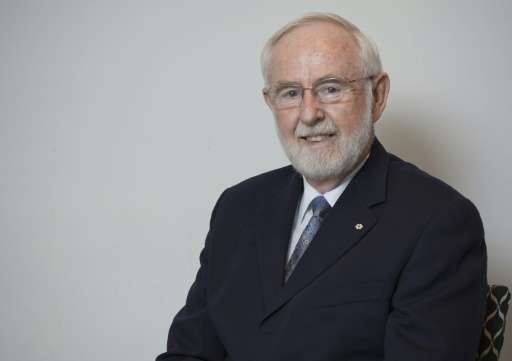This photo provided October 6, 2015 by SNOLAB in Sudbury, Ontario, Canada shows Arthur McDonald
Canadian Arthur McDonald, who shared the Nobel Physics Prize with Takaaki Kajita of Japan, said Tuesday he hoped their work on neutrinos could pave the way to nuclear fusion power.
Neutrinos are subatomic particles created as the result of nuclear reactions, such as the process that makes the Sun shine.
The prevailing theory was long that neutrinos had no mass, but work carried out separately in underground labs by teams led by Kajita in Japan and McDonald in Canada showed that this was not the case.
Speaking on Canada's public broadcaster CBC, McDonald said his work on the particles could be used for "measuring the fusion reactions that power the Sun."
"Knowing that the calculations that are applicable to the Sun are correct helps a lot when you're trying to understand what's being done here on Earth," he explained.
In contrast to nuclear fission, nuclear fusion holds out promise of a cheap, plentiful and safe form of power.
Understanding how fusion works in the Sun would help efforts to replicate the process—on an infinitely smaller scale—on Earth.
At age 72, Arthur McDonald said winning the Nobel Prize brought him back many years.
"We started in 1984 with 16 people, and we went on to work at this for many years with tremendous support from Canada to do something really unusual here," he recalled.
"It turned out to be a great success that we're very proud of."
When McDonald received the call at 5 am local time (0900 GMT) informing him he had won the Nobel Prize, he said he knew right away it wasn't a prank because he recognized the caller's Swedish accent.
Receiving such an honor, he said, is "pretty unusual, but a great tribute to the hard work of all our team over many years."
"And it's wonderful to have that happen in Canada and for us to have been able to give many students (who worked at his Snolab) a real moment in the process," he said.
McDonald has retired from teaching, but is still involved in research.
His original underground lab—located two kilometers below the surface in an old mine near Sudbury, Ontario where he experimented with neutrinos—has tripled in size and is now experimenting with dark matter particles.
"And that may lead to another (eureka) moment, we hope, before very long," he said.
© 2015 AFP






















